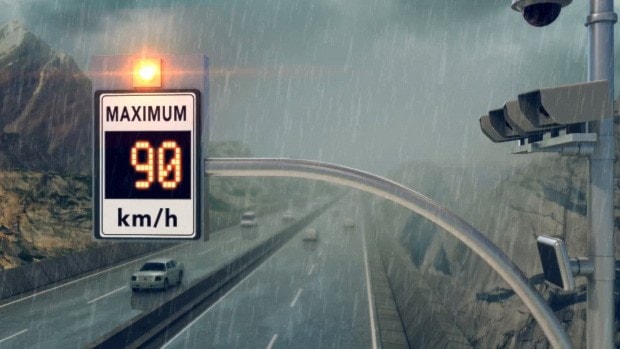The choice of a safe travel speed depending on the driving environment can be as varied as the number of drivers on the highway. I can recall responding to an injury crash on an icy divided highway where both the ambulance and I were using the left lane and all emergency warning equipment. Even with the urgency of the situation, travelling at 95 in the posted 110 km/h zone seemed to be appropriate to both of us. This was clearly not the case for other drivers as we were passed a number of times by vehicles using the right hand lane.
2016 will see the first introduction of variable speed limits (VSL) on highways in British Columbia. Slated for implementation on segments of the Sea to Sky, Coquihalla and Trans Canada highways, the speed limit will be shown on electronic speed signs that can be changed remotely based on existing weather conditions. Data for the changes will be gathered through pavement and visibility sensors installed in these highway segments. Operations staff with the Ministry of Transportation and Infrastructure will use the data to change the speed limit displayed to one that is appropriate for safety.
Experience with VSL elsewhere indicates that it is generally well received by drivers and results in a safety improvement. VSL are especially effective if variable message signs indicate why the change has occurred. One drawback appears to be a tendency to create greater speed variance between vehicles. Another issue is that to remain effective, speed enforcement needs to be sufficient to maintain compliance.
Perhaps highway segments with VSL would be an ideal opportunity to introduce time over distance automated speed enforcement as well. The danger presented by conventional enforcement methods increases as VSLs decrease. Automated enforcement could increase compliance and maintain uniformity in application without increasing risk.
Schewe is a retired constable with many years of traffic law enforcement experience. To comment or learn more, please visit drivesmartbc.ca
